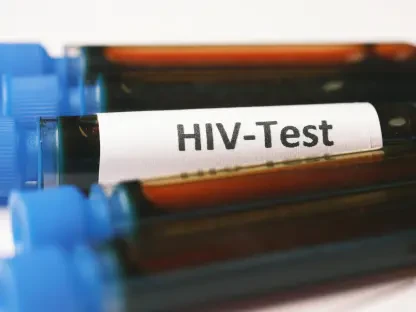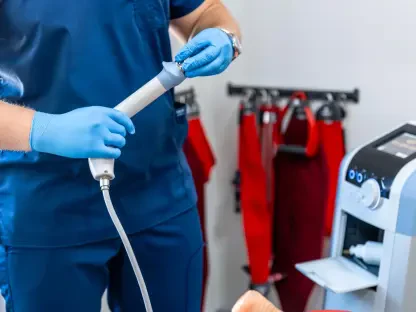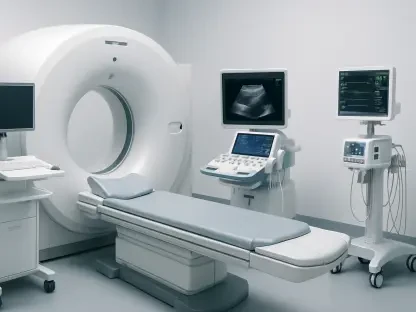Imagine a future where a patient’s health records flow seamlessly between doctors, hospitals, and even personal apps, ensuring that critical information is always at hand, no matter the location or system. This vision of interoperability in health care is not just a hopeful dream but a tangible goal that health technology strives to achieve by 2026. The urgency to connect disparate systems stems from the need to enhance patient outcomes, slash administrative inefficiencies, and give individuals unprecedented control over their medical data. Recent federal initiatives, coupled with rapid advancements in digital tools, have set an ambitious timeline for transforming how health information is shared across the ecosystem of providers, payers, and patients. However, the path forward is riddled with obstacles, from deep-seated privacy concerns to the complexities of aligning diverse technological platforms. As 2026 approaches, the question remains whether health tech can deliver on its promise to revolutionize data sharing or if systemic challenges will stall progress. This exploration delves into the historical context, current efforts, persistent barriers, and future possibilities that could define this pivotal moment in health care digitization. The stakes are high, impacting not just clinical efficiency but the very trust patients place in the systems meant to protect their most sensitive information.
A Legacy of Progress in Health Data Sharing
The quest for seamless health data sharing has deep roots, tracing back to the 1996 Health Insurance Portability and Accountability Act (HIPAA), which first established standards for electronic data exchange while prioritizing privacy safeguards. This legislation marked an early recognition that digital connectivity in health care required both technological and regulatory frameworks to function effectively. Though its primary focus was on protecting patient information, HIPAA sparked vital conversations about how disparate systems could communicate without compromising security. Over the subsequent decades, this foundation paved the way for more robust policies aimed at knitting together the fragmented landscape of health information technology in the United States.
Further momentum came with the 2009 Health Information Technology for Economic and Clinical Health (HITECH) Act, a landmark policy that incentivized the widespread adoption of electronic health records (EHRs) through substantial financial rewards for providers meeting “meaningful use” criteria. The results were staggering—hospital EHR usage surged from a mere 12% in 2009 to an impressive 97% by 2014, demonstrating the power of federal policy to drive technological uptake. However, the proliferation of EHRs revealed a critical gap: while most facilities now had digital records, these systems often operated in silos, unable to exchange data seamlessly. This realization underscored that adoption alone was insufficient without a focus on interoperability to ensure true connectivity across the health care spectrum.
Bold Steps Forward with Recent Initiatives
In a significant push toward connectivity, the Centers for Medicare & Medicaid Services (CMS) unveiled the CMS Interoperability Framework in 2025 as part of the Trump administration’s “Making Health Tech Great Again” initiative. This voluntary set of guidelines seeks to standardize data sharing among a coalition of over 60 entities, including health care providers, insurance payers, and technology developers. The framework aims to create a unified digital infrastructure where health information can move fluidly, targeting a transformative shift by 2026. With specific milestones set for early adopter outcomes in the first quarter of 2026 and full compliance with visionary standards by July 4 of that year, the initiative represents a bold bet on collaborative innovation to reshape the health data landscape.
Central to this effort are the CMS Aligned Networks, which bring together diverse stakeholders to implement practical solutions for data exchange. These solutions range from diabetes management applications that empower patients to track their conditions to AI-driven conversational assistants that streamline provider interactions, and even administrative automation projects like “Kill the Clipboard” to eliminate paperwork burdens. Such targeted use cases highlight the potential for health tech to address real-world pain points. Yet, the voluntary nature of this framework raises questions about its ability to enforce compliance across a fragmented industry. Past promises of interoperability from corporate players have often fallen short, and skepticism remains about whether this initiative can achieve its lofty goals by the 2026 deadline without stronger mandates.
Standardization as the Core of Connectivity
Standardization stands as the linchpin of effective health data interoperability, ensuring that varied technological systems can exchange and interpret information without requiring cumbersome workarounds. Tools like the Continuity of Care Document (CCD) for clinical data and application programming interfaces (APIs) for real-time data access are vital in this endeavor. Without uniform protocols, a physician in one region might struggle to retrieve a patient’s records from another, delaying critical care decisions. The CMS Interoperability Framework emphasizes these common standards, aiming to align stakeholders under a shared digital language by 2026. This push for consistency is not merely technical but a fundamental step toward a cohesive health care system where data barriers no longer hinder patient outcomes.
Achieving standardization, however, is a daunting task given the diversity of systems and interests at play. Many technology vendors prioritize proprietary formats over universal compatibility, creating persistent roadblocks to seamless integration. Even with federal guidance, the adoption of standardized protocols varies widely across organizations, often slowed by cost concerns or resistance to change. The success of health tech in revolutionizing data sharing by 2026 hinges on overcoming these entrenched challenges. If standardization efforts falter, the vision of a fully connected health ecosystem risks remaining elusive, underscoring the need for concerted action among all players to prioritize interoperability over individual agendas.
Navigating the Privacy and Security Minefield
As health data sharing expands under ambitious tech initiatives, the specter of privacy and security breaches looms large, threatening to undermine public trust. While HIPAA provides a baseline for safeguarding protected health information, its reach does not extend to many emerging players such as consumer health apps and AI developers now integral to the data ecosystem. This regulatory gap leaves sensitive patient information vulnerable, especially when it travels outside tightly controlled networks like those aligned with CMS. High-profile incidents involving companies facing Federal Trade Commission scrutiny for alleged data misuse underscore the real risks at play. Without updated federal protections, including rights to data deletion, the promise of interoperability by 2026 could be overshadowed by fears of unauthorized access or exploitation.
The advent of cloud computing and distributed data systems further complicates the security landscape, as information often moves beyond regulated boundaries into less secure environments. Wearable devices and fitness trackers, for instance, collect personal health metrics not always classified under strict privacy laws, yet these data points can reveal intimate details about an individual’s life. Current regulations struggle to keep pace with such technological advancements, creating a patchwork of protections that varies by state and context. Addressing these vulnerabilities is paramount for health tech to achieve widespread adoption by 2026. Robust, forward-thinking policies must evolve alongside innovation to ensure that data sharing enhances rather than endangers patient trust and safety.
Consumer Engagement: A Double-Edged Sword
Empowering patients to manage their health data through digital tools is a cornerstone of the interoperability vision, promising greater control and involvement in personal care decisions. Applications and platforms now allow individuals to access medical records, track chronic conditions, and communicate directly with providers, aligning with the 2026 goal of a connected health system. However, this shift places significant demands on users, many of whom lack the time, technical proficiency, or resources to navigate complex digital environments. The risk is that instead of feeling empowered, consumers may feel overwhelmed by the responsibility of managing their data, potentially leading to disengagement from tools meant to benefit them.
Compounding this challenge are widespread misunderstandings about data privacy and rights, as evidenced by a 2023 Pew Research Center survey highlighting public concern and confusion over how personal health information is protected. Without clear education, trust in health tech remains fragile, threatening the adoption needed for transformative data sharing by 2026. Additionally, disparities in access exacerbate the issue—rural and low-income communities often lack reliable internet or devices, creating a digital divide. Programs like CMS Blue Button, designed to facilitate data access for Medicare beneficiaries, have seen limited uptake, with fewer than 250,000 users as of 2022. Bridging these gaps through targeted outreach and support is essential to ensure that the benefits of interoperability reach all segments of society, not just the tech-savvy.
The Role of Emerging Tech and Value-Based Care
Emerging technologies like artificial intelligence (AI) and advanced analytics are reshaping the health tech landscape, offering powerful tools to enhance data sharing and care delivery by 2026. AI-driven solutions, such as conversational assistants that aid in patient-provider communication and algorithms that personalize treatment plans, depend heavily on seamless interoperability to function across diverse systems. These innovations promise to reduce medical errors and improve outcomes by ensuring that critical data is available in real time. As part of broader federal initiatives, the integration of such technologies into health care workflows signals a forward-looking approach to meeting the complex demands of modern medicine, with significant potential to transform how information is utilized.
Equally impactful is the connection between interoperability and value-based care models, which prioritize quality outcomes over service volume, as encouraged by policies like the Affordable Care Act. Providers require real-time data exchange to coordinate care effectively and measure performance across settings, making robust data sharing a critical enabler of systemic reform. However, the inclusion of non-traditional entities like AI firms—often outside HIPAA’s regulatory scope—introduces risks of data misuse or ethical concerns. Balancing the drive for innovation with necessary safeguards remains a pressing challenge. If unaddressed, these issues could hinder the full realization of health tech’s potential by 2026, underscoring the need for careful oversight alongside technological advancement.
Voluntary Frameworks: Promise or Pitfall?
The voluntary structure of the CMS Interoperability Framework offers a flexible approach to achieving data sharing goals by 2026, allowing stakeholders to adapt quickly to technological changes without the constraints of rigid mandates. This adaptability encourages innovation, as early adopters can test and refine solutions like AI tools and administrative automation, potentially setting industry benchmarks. With over 60 entities already committed to CMS Aligned Networks, the framework fosters a collaborative spirit that could accelerate progress. The emphasis on practical, patient-centered applications demonstrates a pragmatic focus, aiming to showcase measurable results within the tight timeline set for the coming year, which could build momentum for broader adoption.
Yet, the absence of enforceable requirements casts doubt on the framework’s ultimate impact, as voluntary initiatives historically struggle to ensure consistent participation across a fragmented industry. Previous corporate commitments to interoperability have often failed to materialize, raising concerns that competing commercial interests or operational inertia might derail current efforts. Moreover, employer-sponsored health plans, which cover a majority of Americans, are not subject to CMS rules, meaning a significant portion of the population might remain untouched by these advancements unless voluntary buy-in expands. The tension between flexibility and accountability will be a defining factor in whether health tech can deliver revolutionary change by 2026, highlighting the need for strategic incentives to complement voluntary action.
Shaping the Future of Health Data Exchange
Reflecting on the journey, the strides made in health data sharing through decades of federal policy and technological innovation have been remarkable, with EHR adoption nearing universal levels and frameworks like TEFCA laying groundwork for secure exchange. Initiatives launched in 2025 under CMS demonstrated a clear intent to push boundaries, integrating AI and practical applications to address real needs. However, persistent gaps in privacy protections, especially for data handled by unregulated entities, posed significant risks that were not fully resolved. Consumer engagement, while a key goal, remained limited by access disparities and low awareness, as seen in the underwhelming uptake of tools like Blue Button.
Looking ahead, actionable steps must focus on strengthening regulatory oversight to close privacy loopholes, ensuring that emerging technologies are matched with robust safeguards. Investments in consumer education and infrastructure to bridge the digital divide will be critical to equitable progress. Policymakers and industry leaders should consider hybrid models that blend voluntary innovation with targeted mandates to guarantee broader participation, especially from employer plans. By prioritizing trust, inclusivity, and accountability, the health tech sector can build on past efforts to create a connected, patient-centered system that truly revolutionizes data sharing in the near future.









